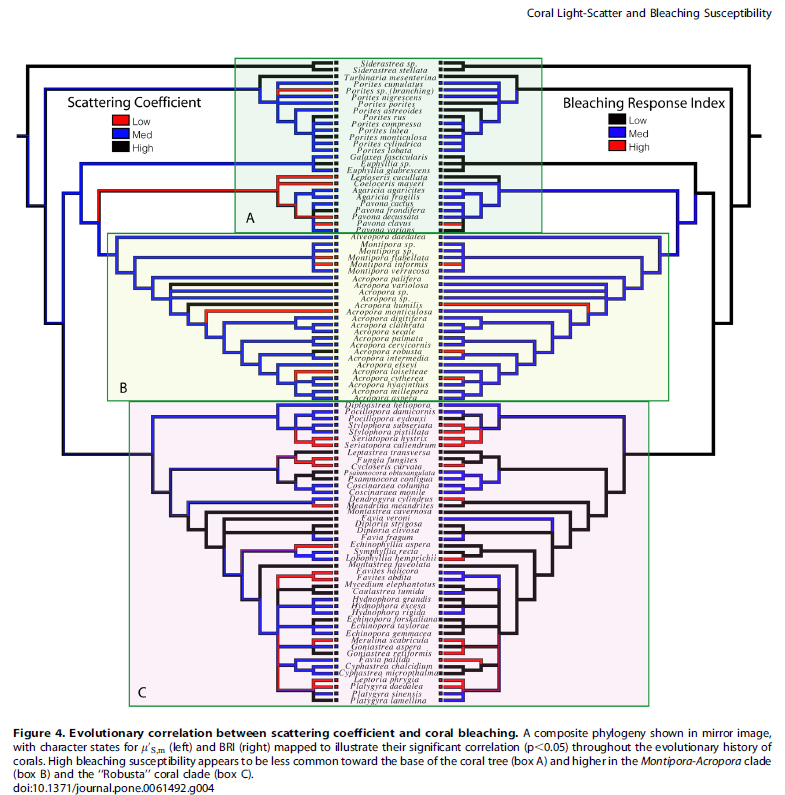Methods
Summary
Coral reefs are at the forefront of ecosystems adversely affected by climate change due to sensitivity to heat stress. The foundation of these ecosystems are built upon associations with photosynthetic algae (Symbiodinium) which provide food to their coral hosts. The coral-Symbiodinium association is a highly efficient optical machine, specifically optimized for collection of sunlight. Unusually high temperatures can disrupt these symbioses (bleaching), resulting in increased coral morbidity and mortality. However, the response to thermal stress is not identical across individual colonies, species, or events; providing critical insight into bleaching determinants and mechanisms. There is some evidence that between-species differences in coral morphology may be partially responsible for these differences.
Our project seeks to use documented differential susceptibilities to bleaching stress among coral species to understand which features of the coral skeleton are most closely linked with increased bleaching susceptibility. We have demonstrated a link between the light-scattering properties of the coral skeleton (at the level of calcium carbonate micrograins) and differential bleaching susceptibility. What we are working on now, is understanding how organizing those micrograins into different morphological structures may compound this effect.
We will collect data on the differences in morphological organization, at scales ranging from nanometers to tens of centimeters, among ~100 coral species using hundreds of skeletons from museum collections, collaborators, and our own collections. We will focus on skeletal features such as micro architecture, size and complexity of corallites (i.e., number of septa and presence/ absence of other characteristics), the spacing and abundance of corallites, and colony morphology. Micro architecture will be assessed using the Enhanced Backscattering Spectroscopy instrument and analyzed on custom built software. Macro architecture will be assessed using digital photographs taken through a microscope to document skeletal morphology and measurements of features will be collected using digital image analysis software from the National Institutes of Health. All features will be assessed for their links to coral bleaching using our previously published bleaching susceptibility index and phylogenetic principle components analysis which corrects for the relatedness of coral species. This is because corals that are closely related may have evolved similar strategies to capture light which could affect similarly their bleaching response; with phylogenetically-corrected analysis we can account for relatedness to reveal the real relationship between coral light scattering and bleaching susceptibility.
Challenges
With all of the methods worked out (in particular the spectroscopic techniques that allow measuring light scattering and sub-micron morphology of coral skeletons) and most specimens needed for the work either easily obtained by diving or publicly available though museum collections, we see few challenges to completing this project. We are also planning to obtain live corals to keep in an aquarium to measure skeletal architecture at different scales and in the future perform bleaching experiments with these same corals.
Pre Analysis Plan
The main analysis will be supported by a standard phylogenetic principle components analysis which will reveal which of the measured features contributes most to the observed differences in bleaching susceptibility, while controlling the potentially misleading effects of non-independence of species (they are related through their evolutionary history or phylogeny). The phylogeny that will be used for correction of non-independence is the most comprehensive (in terms of species and data) available.
Protocols
This project has not yet shared any protocols.
